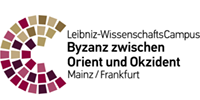Byzantine “Reconquista” and Christianization (8th-11th centuries): Greece and the Western frontier of Byzantium
Large parts of the south Balkan Peninsula and Western Greece during the upheaval of the Great Migrations and the crisis of the Byzantine Empire from the late 6th to the 8th c. had fallen at the margins of the Byzantine Empire's authority into an uncertain frontier-like situation. These areas were described by contemporary Byzantine historians as unruly "wild-lands", although archaeology has shown that in most cases life continued seamlessly with local variations. From the late 8th c. on the re-organized Byzantine state intensifies efforts on re-assessing its power over these lands. Aim of the project is to examine the slow process of establishing back Byzantine state and church authority (8th-11th c.) in the western frontier of the Byzantine Empire, focusing on the Peloponnese and Western Greece, through the study of archaeological material and standing monuments.
This project will be examining the systematic effort of the Byzantine state to reincorporate back into the Empire's political and ecclesiastical control these internal frontier zones. Areas settled occasionally by populations, either outside the formal ecclesiastical organization or completely non-Christian. Special focus will be given to the ways this process was encapsulated in a procedure of ascertaining official Christian institutions that would translate into new monumental space: church structures, new building initiatives and even new settlements, as contrasted to the past. Since the textual sources on this period are extremely biased and focused on the capital city Constantinople, it is in material culture where we can find the bulk of unmediated information. A number of new museum studies and excavations in areas of Greece have recovered evidence of life before the re-establishment of Byzantine state authority that provide proof of a material culture with its own dynamics on both the pre-conquest period and the immediate aftermath. This material will be combined with data provided by the new church buildings that appear all over the countryside after 800, sometimes in the form of humble rural institutions and other times as lavishly decorated buildings of monumental aspirations. At the same time a network of monasteries and fortifications in the decades immediately after the re-conquest events supplement the monumental landscape of authority. The study, documentation and classification of all these layers of information in a comparative model will facilitate the understanding of the realities of change and the dynamics of religious co-existence, resistance or imposition in the western frontier of Byzantium.
This project is affiliated to Römisch-Germanisches Zentralmuseum Mainz.
Sponsorship
Leibniz-WissenschaftsCampus Mainz
Support
Leibniz-WissenschaftsCampus MainzPublications
- N. Tsivikis, Architectural planning and building practices in the basilica of the Theater in Messene, in: DeltChrAE 39 (2018) 111-124.
- N. Tsivikis, Preliminary observations on a building with Christian use in 4th c. AD Messene [in Greek], in: 38ο Συμπόσιο Βυζαντινής και Μεταβυζαντινής Αρχαιολογίας και Τέχνης, ΧΑΕ-Περιλήψεις, Athens (2018) 112-113.













